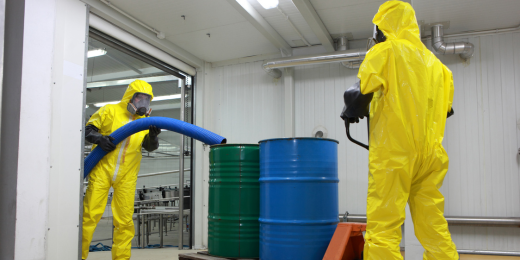Indicators on Reclaim Waste You Need To Know
Indicators on Reclaim Waste You Need To Know
Blog Article
The Only Guide to Reclaim Waste
Table of ContentsLittle Known Facts About Reclaim Waste.The Only Guide to Reclaim WasteHow Reclaim Waste can Save You Time, Stress, and Money.A Biased View of Reclaim Waste5 Easy Facts About Reclaim Waste Shown
Domestic sewage waste refers to the waste and items from a domestic septic container. The proper administration and disposal of residential sewage waste need fluid waste to be transferred to a sewage treatment plant where the proper methods and devices are applied to detoxify and dispose of waste.
Industrial waste usually consists of prospective threats, such as combustible materials or a mixture of liquid and solid waste items, and calls for a much more advanced and thorough disposal process. The disposal of industrial waste normally involves the purification of waste before transport to guarantee secure and proper disposal. Industrial waste is created from results and drainage of commercial procedures and manufacturing.
This kind of waste can not utilize the same sewer administration transport or procedures as septic or business liquids. The hazardous waste administration procedure needs the inspection and screening of fluid waste prior to it undergoes the disposal process (industrial wastewater treatment). Drainage waste is the liquid waste that comes from drainage and excess stormwater in highly booming areas or cities
Runoff waste can trigger contamination and flooding if not dealt with properly. Discover more about sewage system cleaning and waste management. Making certain proper waste administration can avoid catastrophes and reduce ecological harm. Both people in domestic setups and experts in business or manufacturing industries can profit from understanding the procedures and laws of fluid waste administration.
Some Known Incorrect Statements About Reclaim Waste
Get in touch with PROS Services today to find out about our waste management and disposal solutions and the proper means to look after the liquid waste you create.
(https://fliphtml5.com/homepage/kekhp)Do you understand what occurs to your water when you disengage, purge the toilet or drain pipes the washing maker? No? Well, it deserves knowing. This so-called 'wastewater' is not only an essential source yet, after treatment, will certainly be released to our land, rivers or the sea. Used water from toilets, showers, baths, kitchen area sinks, washings and commercial procedures is called wastewater.

water utilized to cool down machinery or clean plant and tools). Stormwater, a type of wastewater, is overflow that moves from farming and city areas such as roofing systems, parks, gardens, roads, paths and seamless gutters right into stormwater drains pipes, after rain. Stormwater streams neglected straight to neighborhood creeks or rivers, at some point getting to the sea.
All About Reclaim Waste
In Queensland, many wastewater is treated at sewer therapy plants. Wastewater is transported from residential or industrial websites with a system of sewers and pump stations, understood as sewage reticulation, to a sewer therapy plant.
The Department of Natural Resources advises city governments concerning managing, operating and maintaining sewerage systems and treatment plants. In unsewered areas, local federal governments may call for owners to install individual or home sewage treatment systems to deal with residential wastewater from commodes, kitchen areas, bathrooms and washings. The Department of Natural Resources authorises using family systems when they are confirmed to be effective.
Many stormwater receives no therapy. In some new class, treatment of some stormwater to get rid of clutter, sand and gravel has started making use of gross pollutant catches. Wastewater therapy happens in four stages: Gets rid of solid matter. Larger solids, such as plastics and other things wrongly released to drains, are removed when wastewater is important link travelled through displays.
Wastewater then moves right into large storage tanks where solids settle and are removed as sludge. Oil and residue are skimmed from the surface area. Uses little living organisms understands as micro-organisms to damage down and remove staying liquified wastes and great particles. Micro-organisms and wastes are incorporated in the sludge. Gets rid of nitrogen and phosphorus nutrients that might cause algal flowers in our waterways and endanger water life.
5 Easy Facts About Reclaim Waste Explained
Nutrient removal is not available in any way sewer therapy plants since it requires expensive specialized devices. It is becoming a lot more usual in Queensland. Clear fluid effluent generated after treatment may still consist of disease-causing micro-organisms. If this effluent is released into waterways such as rivers or the sea, the micro-organisms will eventually pass away out.

Most wastewater streams into the sewage system. Under the Act, neighborhood federal governments provide approvals and licences for environmentally relevant activities (Ages) including wastewater releases that might have a local impact.
Some Ideas on Reclaim Waste You Need To Know
Otherwise, samples are taken for research laboratory analysis. Usually numerous examinations are required to develop the levels of each of the different contaminants such as oils, hefty steels and chemicals in water. Monitoring supplies valid information regarding water top quality and can confirm that licence conditions are being met. The info acquired with monitoring gives the basis for making water quality decisions.
Report this page